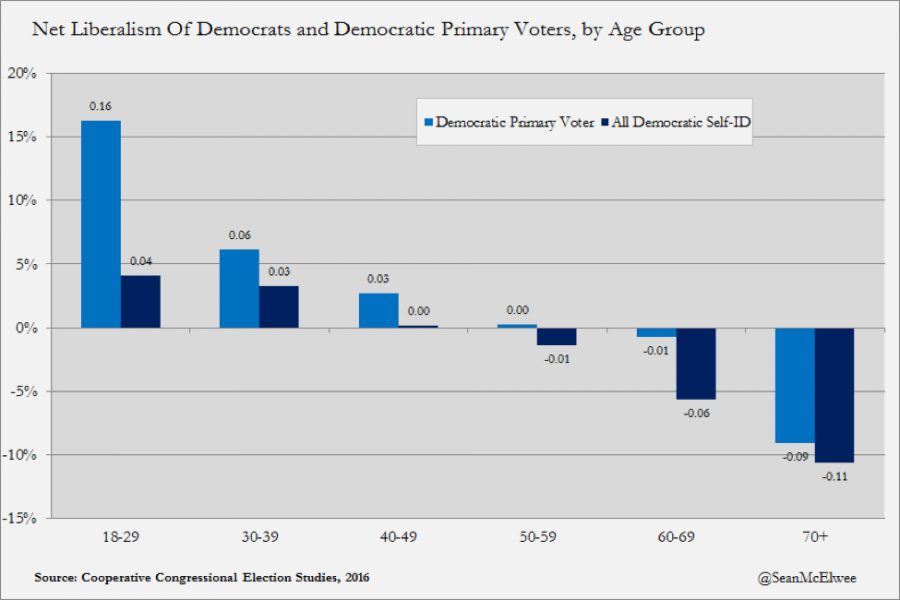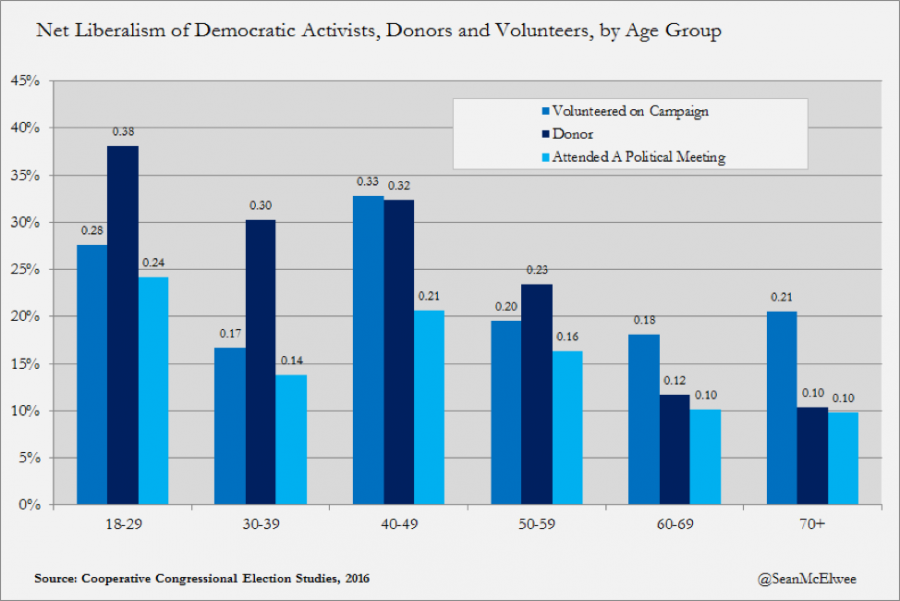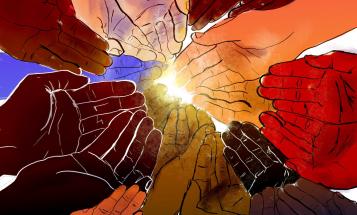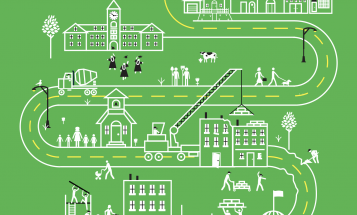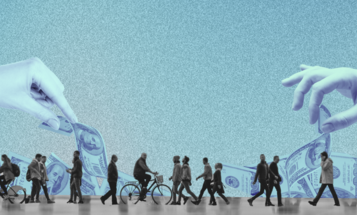
Young Voters Will Pull Democrats To The Left
The top three economic issues for young people are debt-free public college, paid family and medical leave and a higher minimum wage (followed closely by affordable childcare).

Since the election, the Democratic Party has been doing intense soul-searching—examining what has led them to the wilderness, out of power in the executive, legislative and judicial branches and in many of the states. The Republican Party is in the strongest position it has been since 1928. While many in the grassroots have suggested an embrace-the-base strategy for Democrats, some of the party’s old guard have insisted on a move to the center. My analysis of the data suggests that while the pundits spend countless hours re-litigating everything from the 2016 primary to Bill Clinton’s legacy, the Democratic Party will be pulled left by an increasingly liberal base. Demos polling suggests that the Democratic base is ready for aggressive progressive action, particularly on pocketbook economic issues.
This prediction is based on my analysis of the Cooperative Congressional Election Studies 2016 survey, (description of survey). The survey includes a 7-point ideological scale on which respondents place themselves and also the Democratic Party (from “very liberal” to “very conservative”). Using this, I can determine what share of individuals place themselves ideologically to the left, right, or the same as the Democratic Party.
Among all Democrats (including those who identify as “Independent-Democrats”), 33 percent place themselves to the left of the party, 33 percent at the same ideological position and 34 percent place themselves as more conservative. Across all Democratic Party primary voters, 35 percent place themselves to the left of the party, 33 percent the same and 32 percent to the right.
To simplify the analysis, I use “net liberalism,” the percentage more conservative subtracted from the share more liberal. Based on the data above, the net liberalism score for Democratic primary voters is 3 points to the left of the Democratic Party and the net liberalism of all self-identified Democrats is 1 point to the right of the Democratic Party (suggesting that Democrats are actually quite close to the aggregate opinions of their primary voters).
However, as the chart below shows, net liberalism is highest, by a wide margin, among young Democrats. The next generation of Democratic primary voters will be further left than the current generation; younger Clinton primary voters were more liberal than older Clinton voters, and younger Sanders’ primary voters more liberal than older Sanders voters.
The oldest group of Democratic primary voters see themselves as more conservative than the party (29 percent see themselves as more liberal, 38 percent more conservative), while the youngest group see themselves as more liberal (43 percent more liberal, 26 percent more conservative). This is partially because young people are more likely to rate themselves as “very liberal.” Twenty-five percent of Democratic primary voters ages 18-29 reported that they are “very liberal,” compared to 11 percent of Democratic primary voters 70 or older. But young voters are also more likely to see the Democratic Party as conservative. Twenty percent of individuals ages 18-29 see the Democrats as “conservative,” compared to 6 percent of individuals 70 or older.
I also explored the attitudes of what might be called the “Democratic core voters”-- individuals who contribute money, volunteer in campaigns and attend political meetings. I find that these individuals understand themselves to be far more liberal than the Democratic Party, and that young people are more liberal than older folks, particularly young donors. The future Democratic fundraising base is deeply liberal, with fully 57 percent of donors ages 18-29 placing themselves to the left of the Democratic Party.
This carries important implications for the future, but it will depend on the mobilization of young folks. In 2014, the turnout rate among 18-24 year olds was 17 percent, according to Census Bureau data According to CCES data, individuals under 40 made up 38 percent of the voting eligible electorate, but only 19 percent of Democratic primary voters. In the 2018 primaries, candidates will very likely begin to be pulled left by a liberal activist base and even many donors, and as young people become a larger share of the primary electorate, this pull will grow stronger. Already, movements lead by young Latinos and African-Americans have pressed Democrats to the left on issues like immigration and police brutality.
According to Demos polling, sixty-two percent of 18-34 year olds “Strongly Agree” that “I worry about how expensive college is today and the amount of debt required to get a degree.” The top three economic issues for young people are debt-free public college, paid family and medical leave and a higher minimum wage (followed closely by affordable childcare). Facing pressure from young voters who lived through the catastrophic 2007 financial crisis, Democrats are already moving to embrace over-the-horizon policies like Medicare-For-All and debt-free college. This pressure is likely to be felt first in primary elections. The question is, which candidates will respond?

